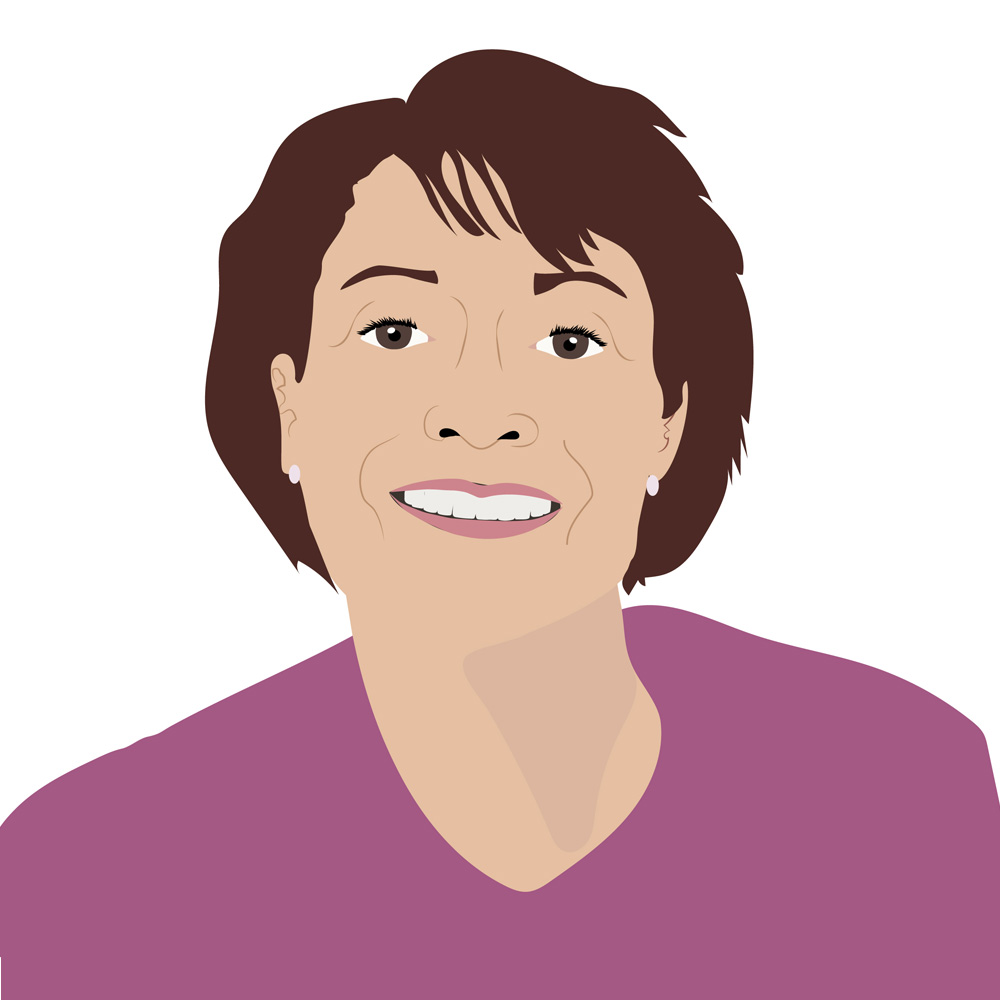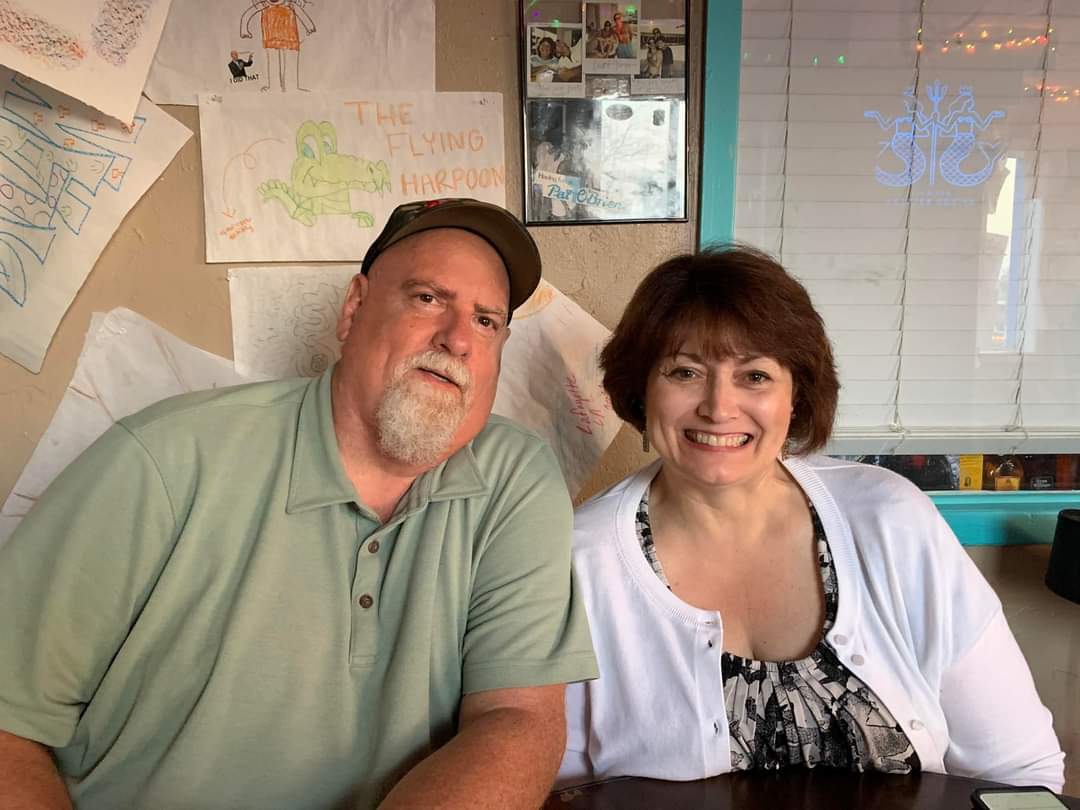Tell us a bit about yourself.

Hi, my name is Sheila Dugan and I live in Florida, USA. I have four grandchildren and try as I may, this Grammy can’t seem to keep up. I love to travel. As a matter of fact we are getting ready to embark on a 47 day excursion following the Lewis and Clark National Historic Trail from Missouri to Washington ending in Oregon. We have additional travel plans that will take us to Utah. I like crocheting and knitting in my downtime, which is usually on the road driving from destination to destination. I’m also the Administrator for the Myelopathy.org Support Group on Facebook.


Can you tell us about your diagnosis journey?
We downsized in 2012 to a three-floor townhouse (it didn’t end up being a downsize after all). I loved walking and the community had an awesome fitness room and an area in which I could walk around. However, I noticed my feet were always burning and sore when I was done walking. I would often put ice on them as that was the best I could do while not knowing what was wrong. I went to the doctor and he was unable to find anything wrong with my feet. They ran blood work and did an MRI. Little did I understand at the time this was a symptom of Degenerative Cervical Myelopathy (DCM). Things continued to worsen from that point in 2012 to present.
The symptoms continued with my feet for about a year, then I didn’t have any pain anymore. I figured I had found the shoes I needed. However, new signs started to appear. For example, I used to tell the doctors I felt like the Tin Man from The Wizard of Oz. I felt like I needed oil to continue to move. My knees were jerking a bit when I walked. I just thought it was the varying hills in the neighborhood. Then I started having severe pain in my arms which the doctors looked at. They said it was just carpal tunnel syndrome. By 2015, I was slowly religating myself to the house. Going out less, not feeling balanced on my feet. The final episode came when I kept dropping things and becoming more and more clumsy. I ended up putting myself on a walker. When I went to the doctor, she finally saw that something was seriously wrong. I went immediately to a neurologist and he of course sent me for an MRI. I was scheduled for emergency surgery on C4/C5. I was never told I had radiculopathy in my arms, nor was DCM ever mentioned. I never felt well again. Something inside me was broken. I had another surgery in 2017. That was the first mention of DCM and what it would mean for me.
When did your symptoms start?
2012How did your symptoms first present themselves?
My feet would become incredibly hot and sore to the touch.What were your symptoms?
First my feet, then my knees had hyperreflexia. My arms ached and my hands fell asleep.
What was your diagnosis experience like?
I was told I needed immediate surgery as my spinal cord was severely compressed. When it happened again two years later, I went to different doctors and they informed me it was DCM. I still wasn’t told exactly what that meant.
When were you diagnosed with DCM?
2017How long did it take you to get diagnosed?
5 yearsDid your doctor or surgeon diagnose you?
Surgeon
Have you had any treatment? If no, why not? If yes, what treatments did you have?
My initial treatment was the surgeries. But after each treatment I would do physiotherapy, until it was deemed unsuccessful. Now I do workouts on my own using the internet to guide me.
When do you have your treatments?
They would begin four weeks after surgery. I would do physiotherapy for six to eight months.
How was your recovery process?
I followed what the doctors told me. I started using a wheelchair and then would work my way to being able to use a cane. This process has taken a long amount of time after each surgery.
How has DCM affected your life?
I have become disabled after the second surgery in 2017. I also had my driving license put on medical suspension. I am now dependent on others to drive me to my appointments, physiotherapy, and countless errands. I have four lovely grandchildren that tap out my stamina. I would love to be able to play and do more with them. I have never been steady enough to pick them up as babies. Someone has always had to put them in my lap for me to hold.
What are some of the misconceptions of DCM and people with DCM?
- The medical community still doesn’t know how to accurately diagnose the illness.
- Support is needed for the rest of the DCM patients’ lives.
- Everything is fine once you have healed from your surgery.
Do you have any advice or tips you would like to share?
Be your own advocate, push doctors to find the problem, don’t be passive. Be sure you take corrective actions, find the supplements needed to strengthen your bones, the right diet or nutritional regimen you should follow.
How did you hear about Myelopathy.org and the Support Group?
I joined in 2017. I found it through searching on Facebook and Google.
What has your experience been like with Myelopathy.org and the Support Group?
First for support, it was a validation of what I had gone through as well as what I was feeling. The validity meant so much for me as I realized I was not alone. I have gathered so much information from the podcasts and the documentation put out from the Myelopathy.org team.
Why did you get involved with Myelopathy.org?
I want to help others see that there is a community of hardworking people trying to raise awareness and support those with DCM and the caregivers that spend time trying to help them. I simply wanted to give back all that was given to me when I first realized I was on a lifetime journey.

